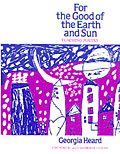Poet Craft
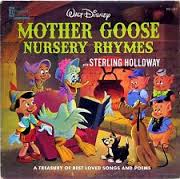 One of my first recollections of hearing poetry as a child was the voice of Sterling Holloway on a Disney LP reciting Mother Goose nursery rhymes while my sisters and I lay sick in our parents’ bed. I have no doubt that those memories were the beginning of what would become a love affair with poetry.
One of my first recollections of hearing poetry as a child was the voice of Sterling Holloway on a Disney LP reciting Mother Goose nursery rhymes while my sisters and I lay sick in our parents’ bed. I have no doubt that those memories were the beginning of what would become a love affair with poetry.
Some years later, my fifth grade teacher, Mrs. Clark, rekindled that love of the sounds of words. Later still, as a bilingual teacher, I discovered traditional children’s poems in Spanish. I loved reciting these with students – poems such as: “Luna, lunera, cascabelera…” and songs such as: “Un elefante, se balanceaba sobre una tela de araña…”
From these simple beginnings, I have come to children’s poetry. I have a huge collection of poetry books and while I’m a novice at writing and understanding the depth that poetry has to offer, I enjoy reading, listening to, and writing it, as time allows.
Here are a few titles to get you started…
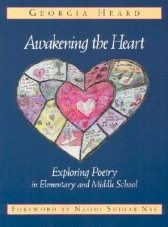
Awakening the Heart: Exploring Poetry in Elementary and Middle School, (Heinemann, 1999) and For the Good of the Earth and Sun: Teaching Poetry (Heinemann, 1989), both by Georgia Heard, are wonderful books about teaching, writing, and encouraging poetry in your own life and the lives of your students. I’ve found chapter 4 in Awakening the Heart, on the meaning and music toolboxes, to be particularly helpful in my own study of the “sense and song” of poetry.
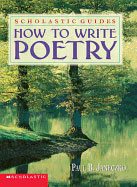
How to Write Poetry by Paul Janeczko (Scholastic, 1999) is another favorite. I especially love the POETCRAFT sections on topics such as “Sound,” and “Creating Images.” Janeczko also includes tips from poets, suggested reading, and short “Try This…” prompts.
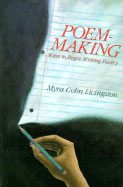
Poem-Making: Ways to Begin Writing Poetry (HarperCollins Publishers, 1991) by Myra Cohn Livingston covers an enormous amount of ground in short, easy-to-read chapters. Like How to Write Poetry, this book was written for younger students, but I have found it to be an easy and concise primer on poetry basics such as: voices of poetry, sound, rhyme, rhythm and metrics, form, and figures of speech. If you’re just getting started, this is a must have.
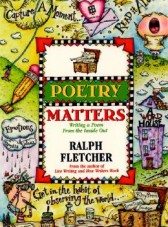
Poetry Matters: Writing a Poem from the Inside Out (HarperCollins Publishers, 2002) and What A Writer Needs (Heinemann 1993) are just two of a number of books on my shelves by Ralph Fletcher. As a writing teacher and author/poet, Fletcher brings his practical knowledge of students and the art of teaching to the page. While Poetry Matters is geared more toward the student reader, I’ve discovered plenty of inspiration for my own writing journey in What a Writer Needs.
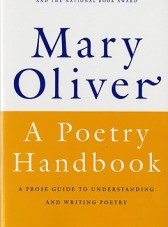
A Poetry Handbook (Harcourt Brace & Company, 1994) by Mary Oliver must be considered a primer for those looking for a succinct and fundamental understanding of some of the basics of reading, understanding, and writing poetry. And you won’t want to miss another Oliver favorite, Rules for the Dance (Houghton Mifflin Company, 1998).
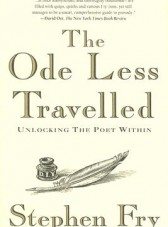
The Ode Less Travelled by Stephen Fry (Gotham, 2006) is a smart, funny, and highly enjoyable series of lessons on meter, rhythm, rhyme, form, and more. Fry’s humor and lively celebration of poetry engage the reader with exercises and witty insights, making the sometimes-mysterious world of poetry within reach of the most timid aspiring poet.








